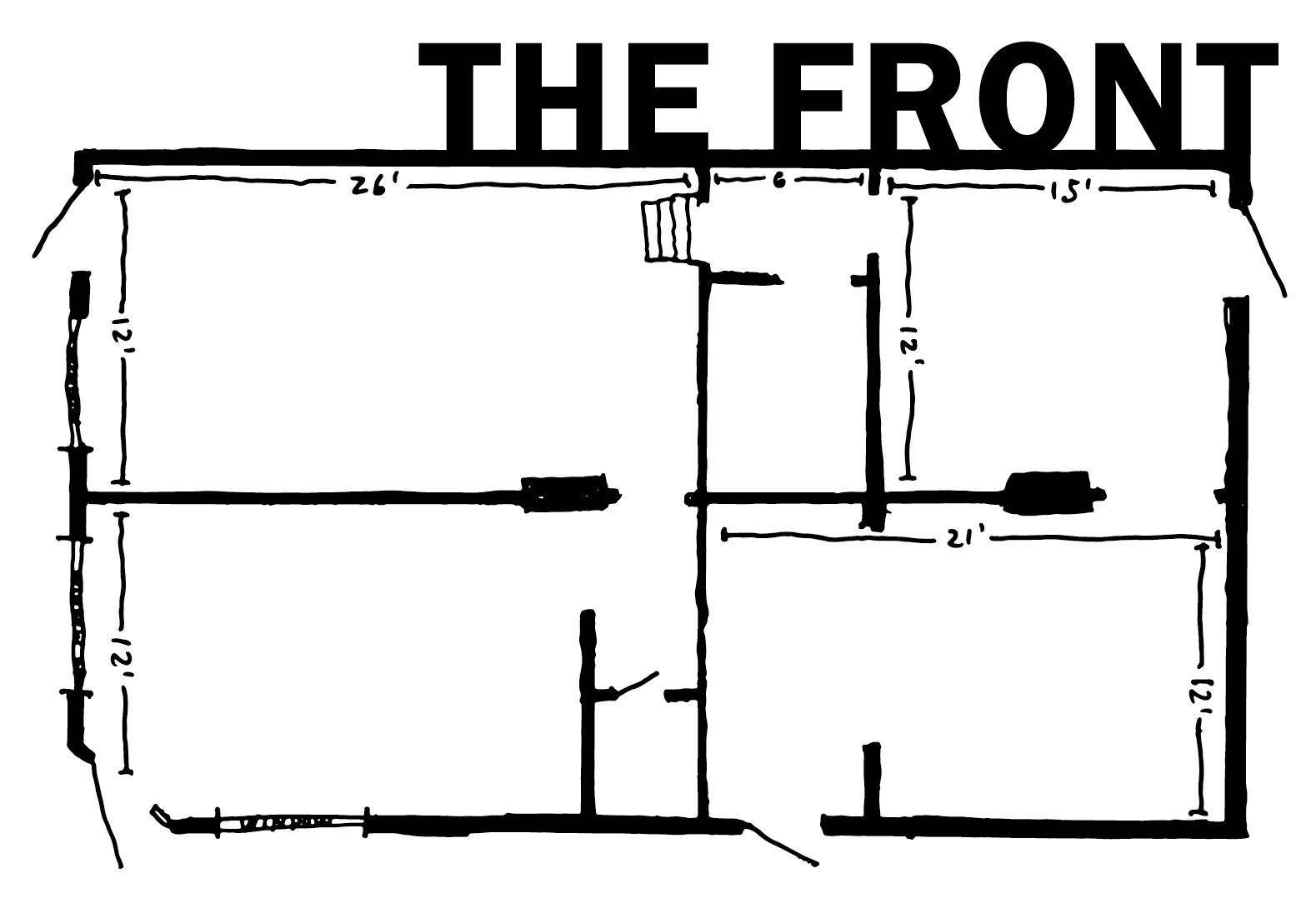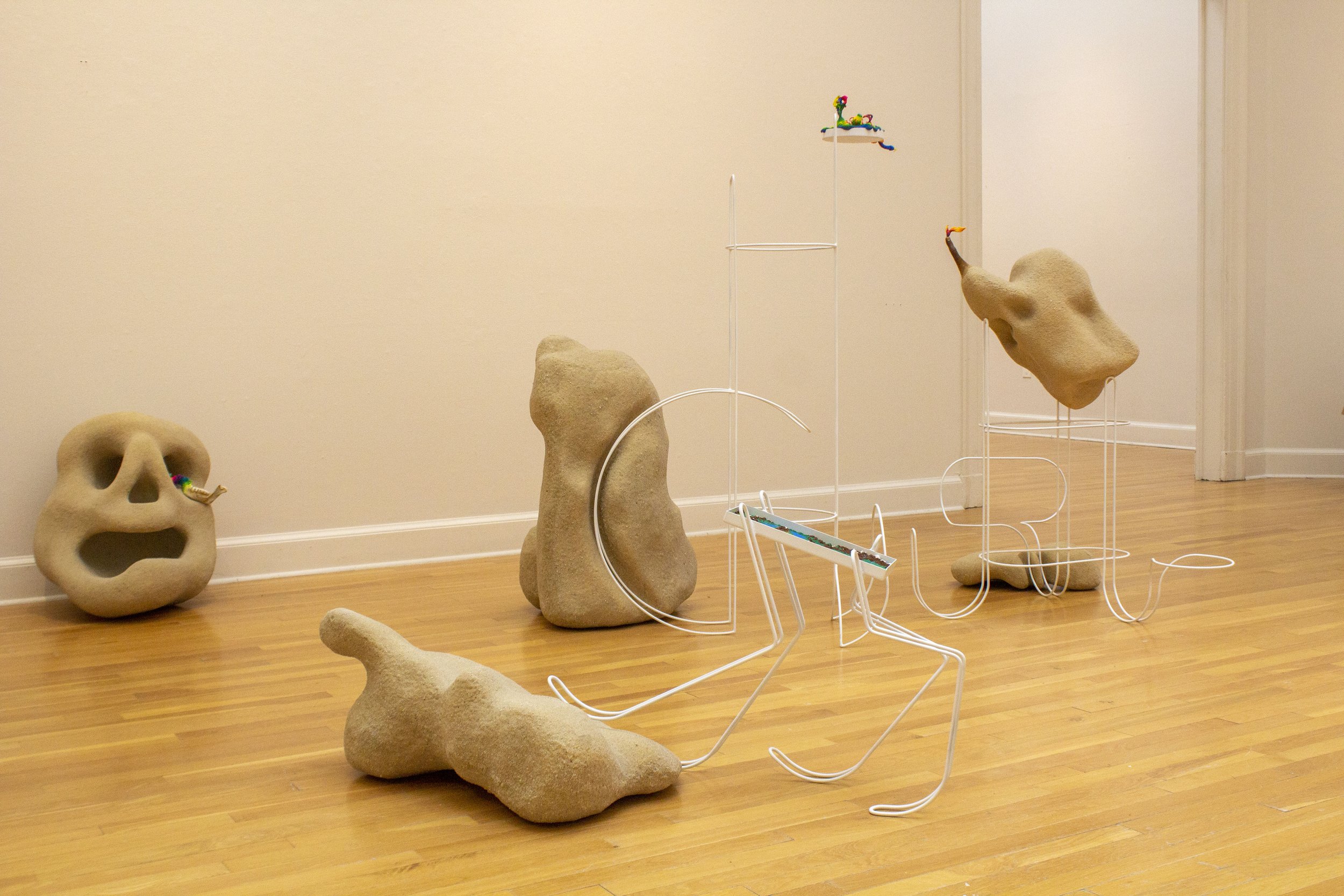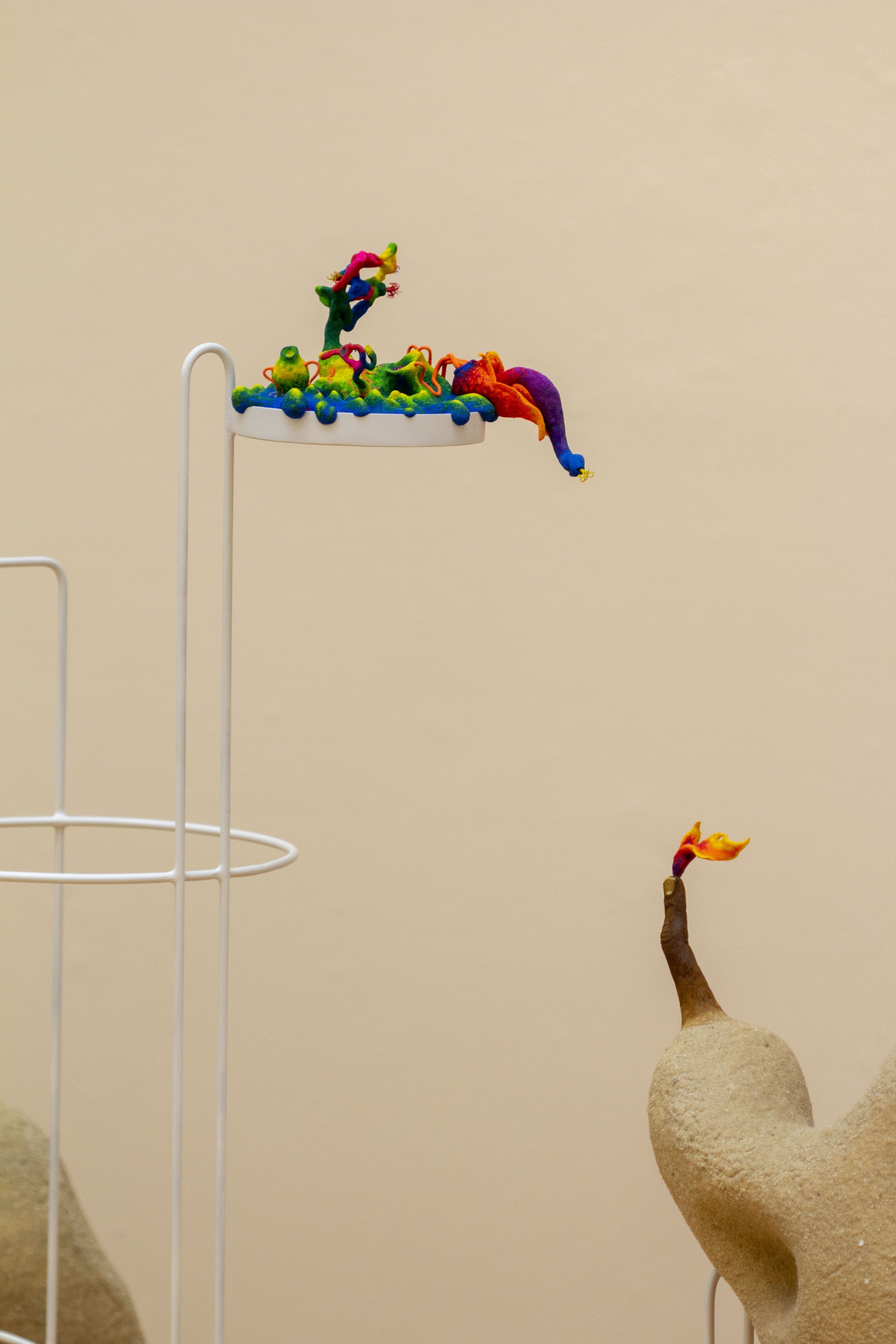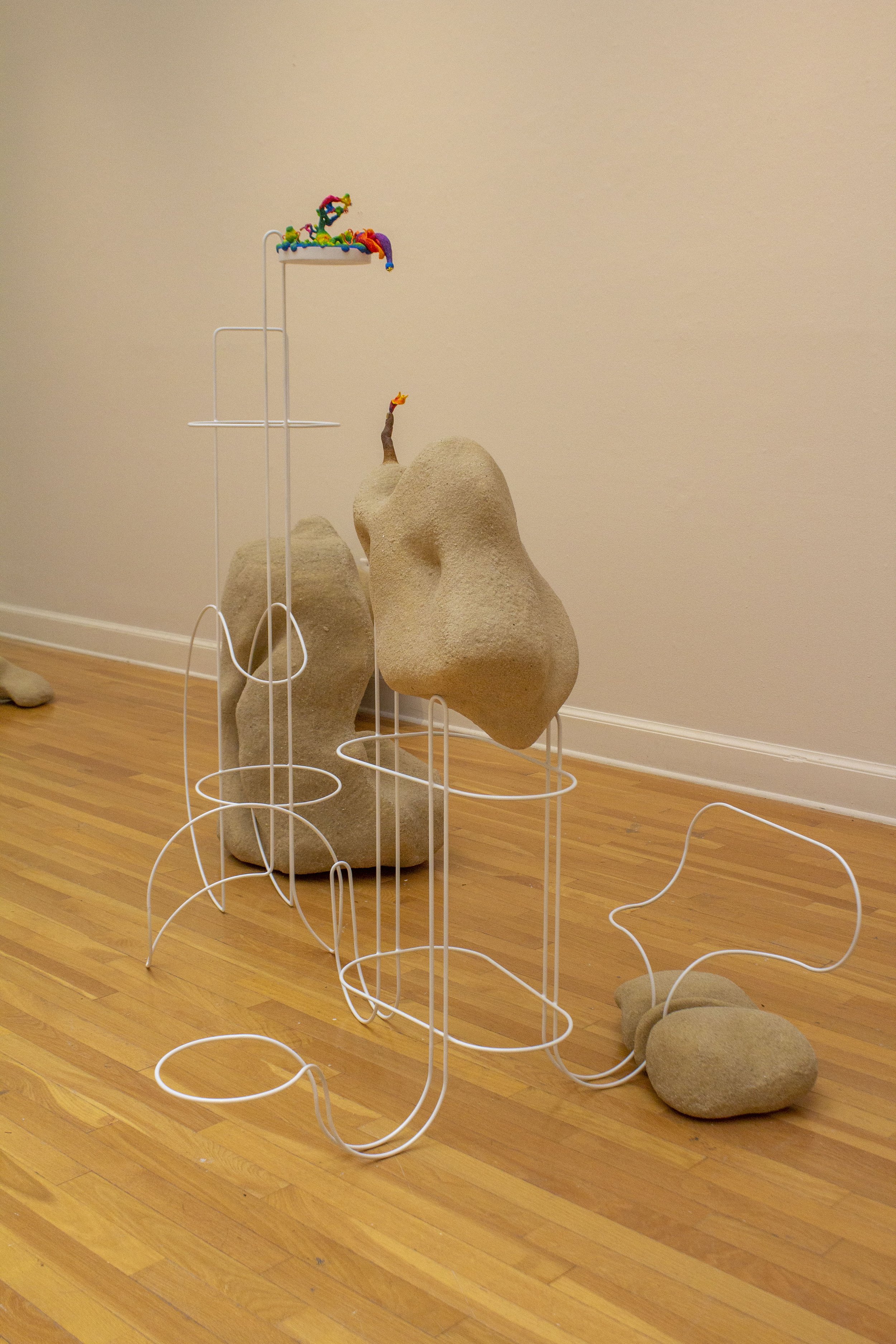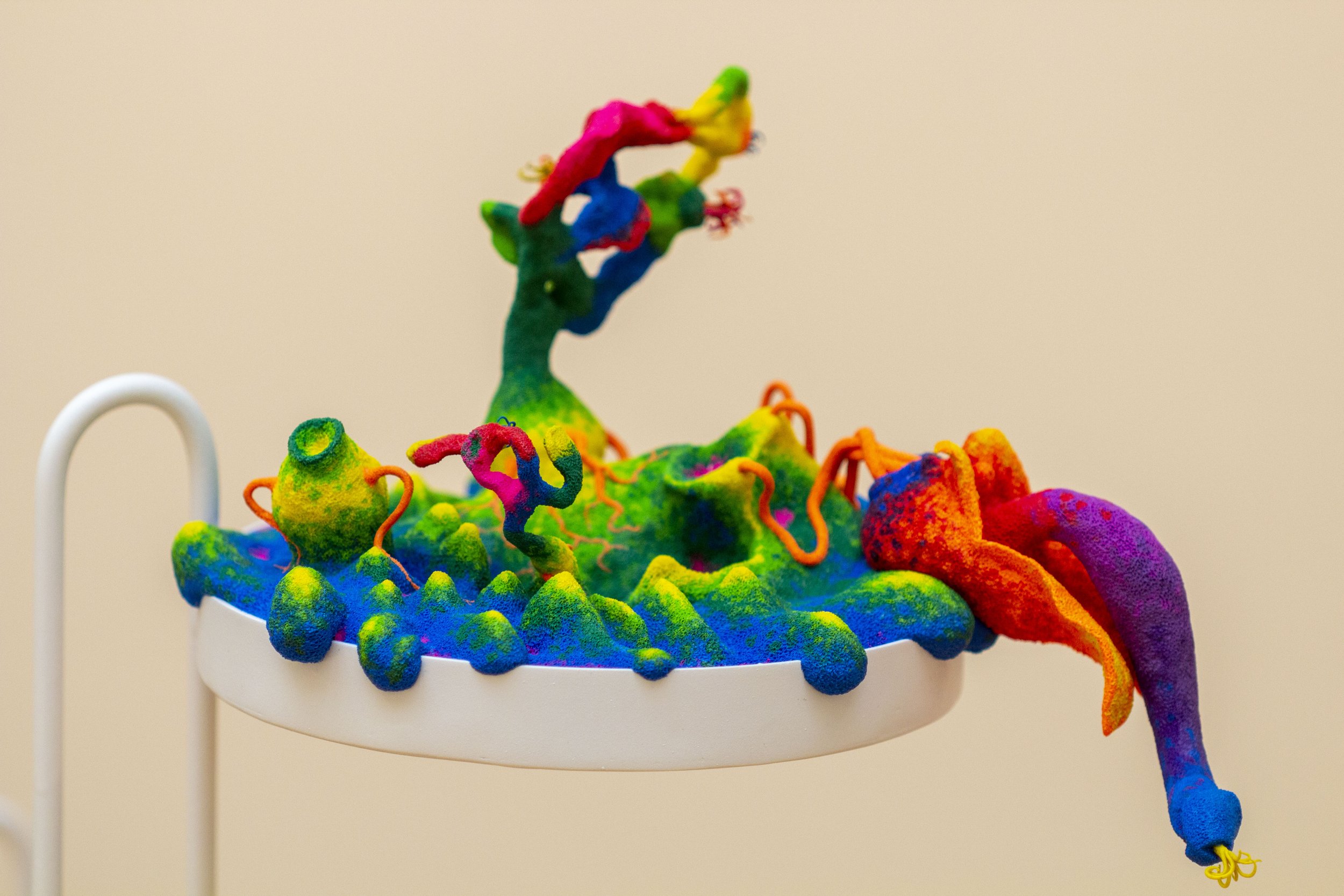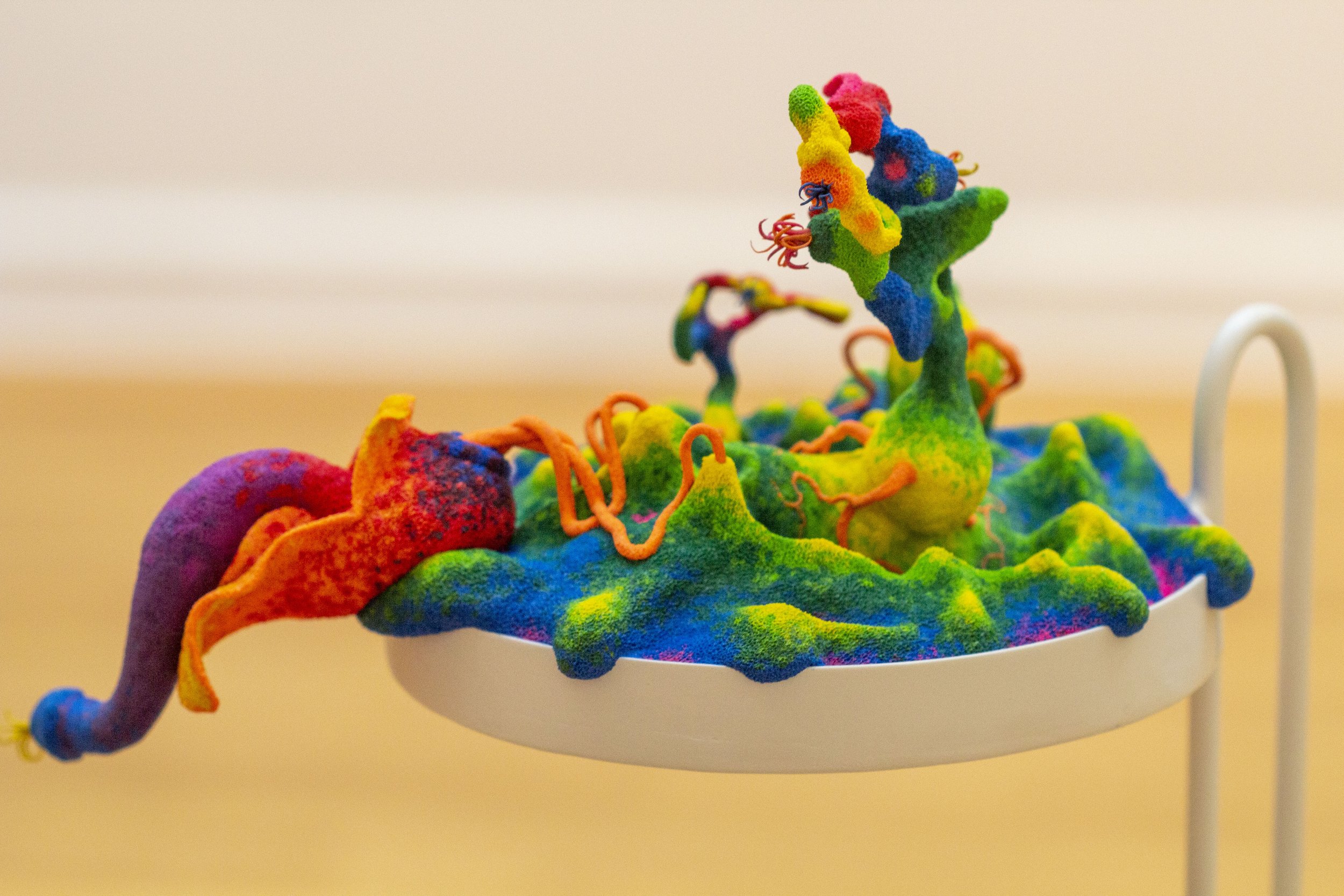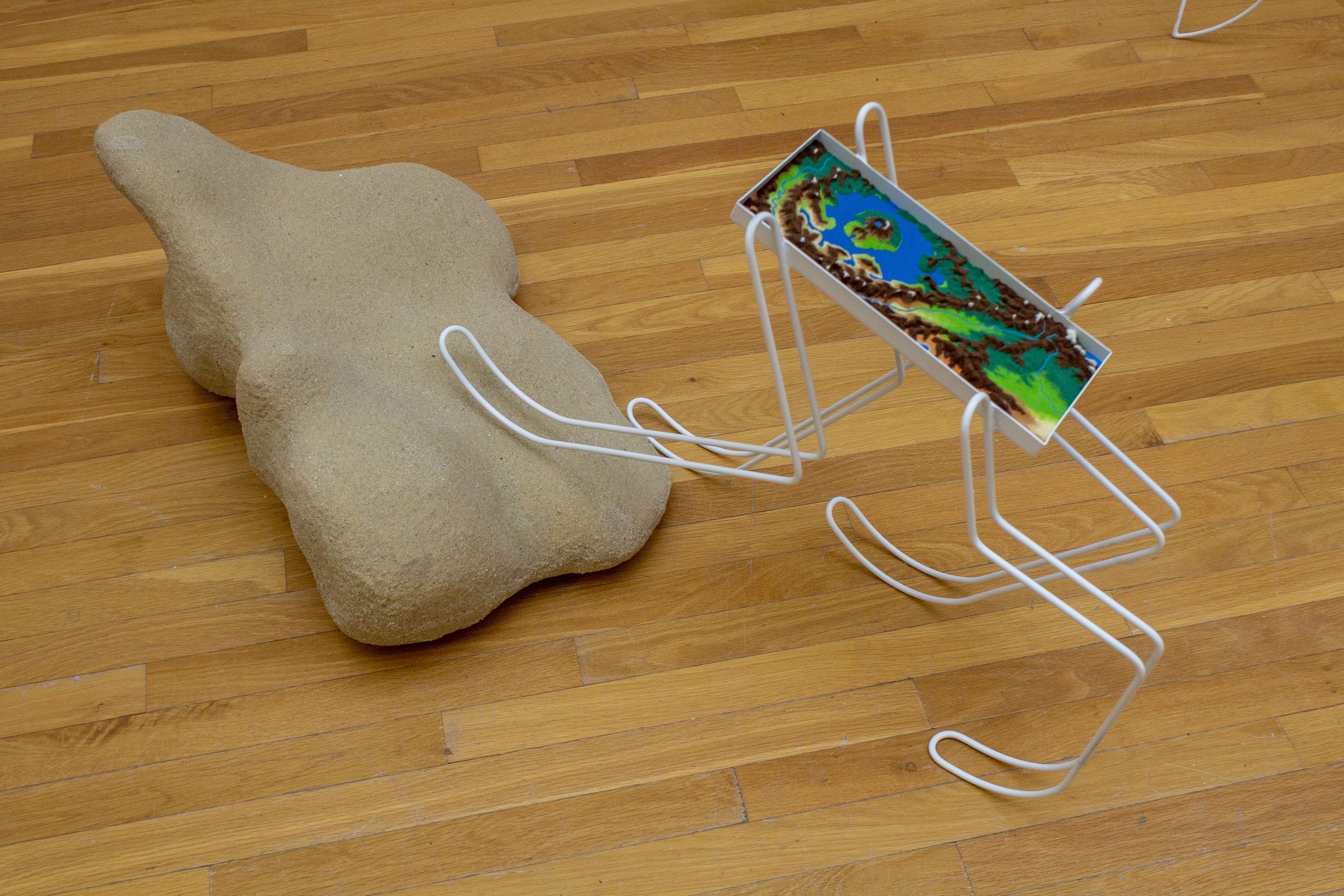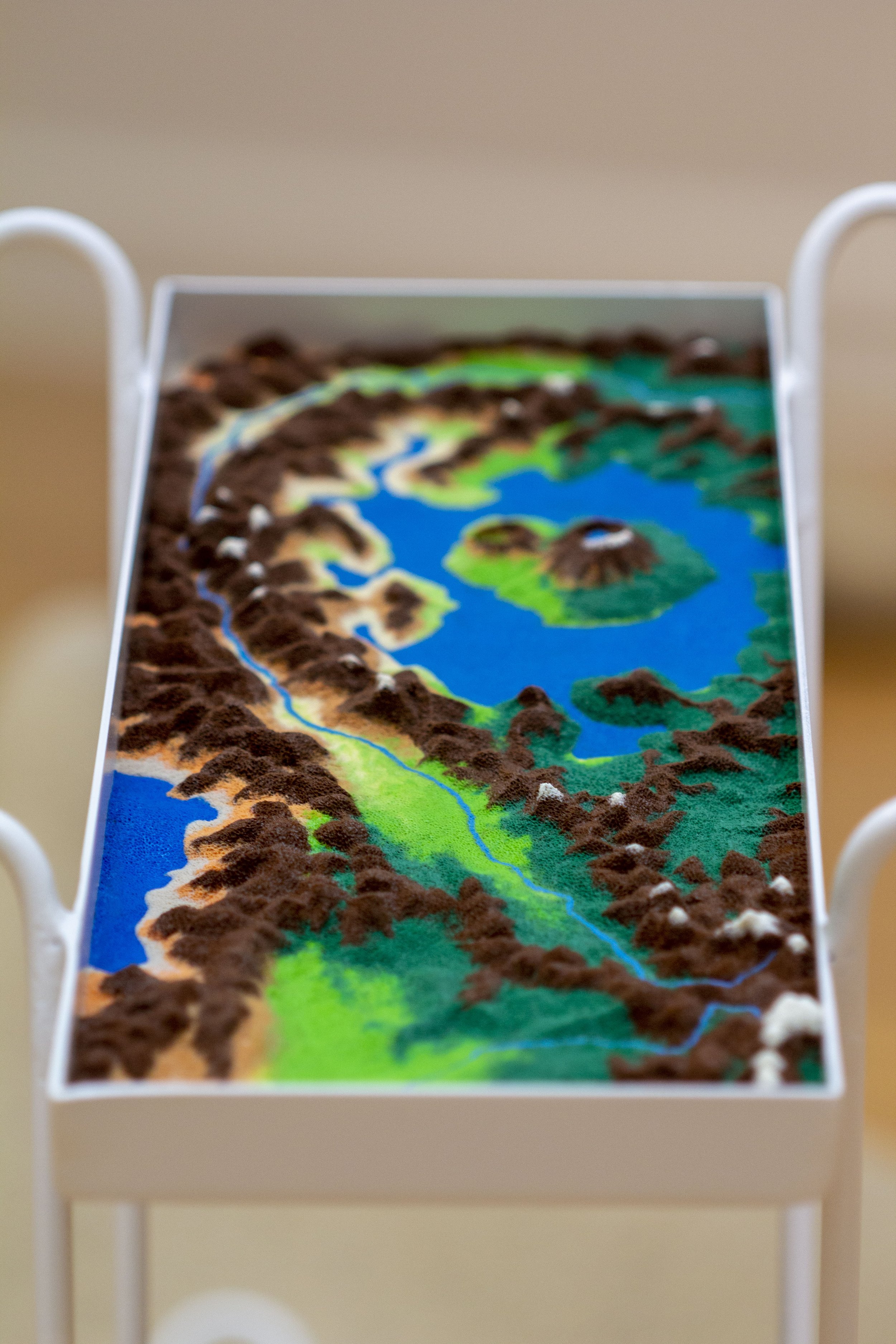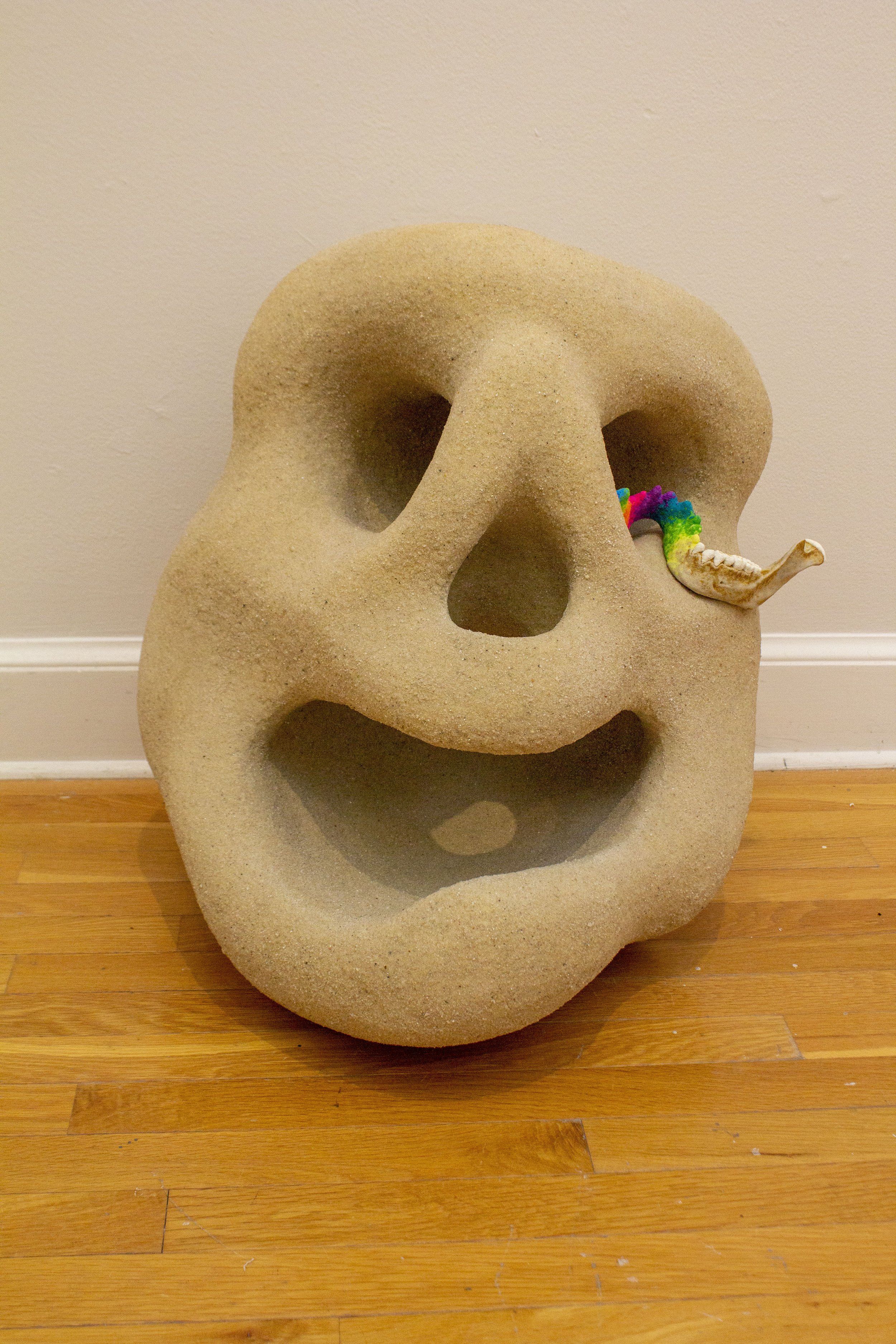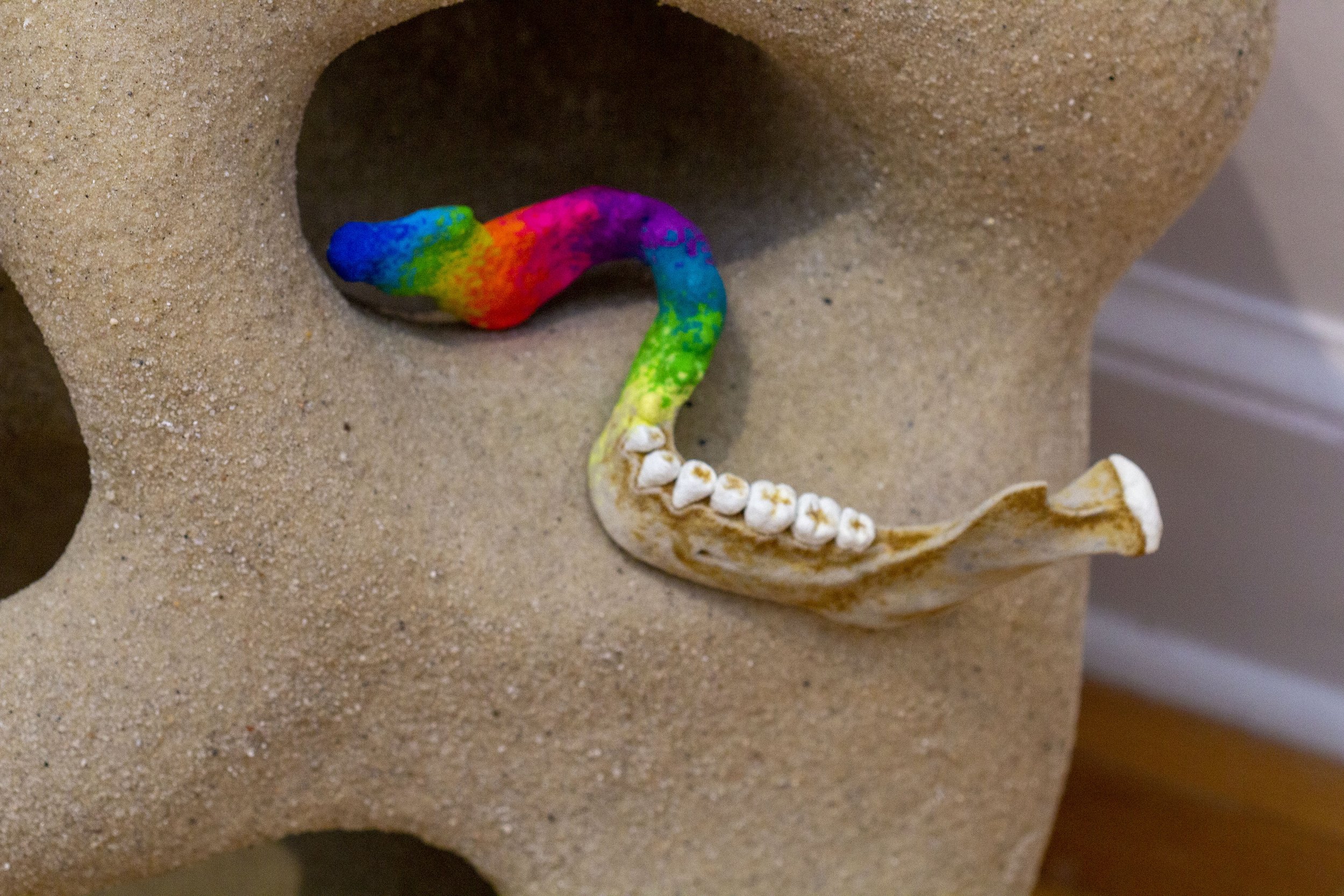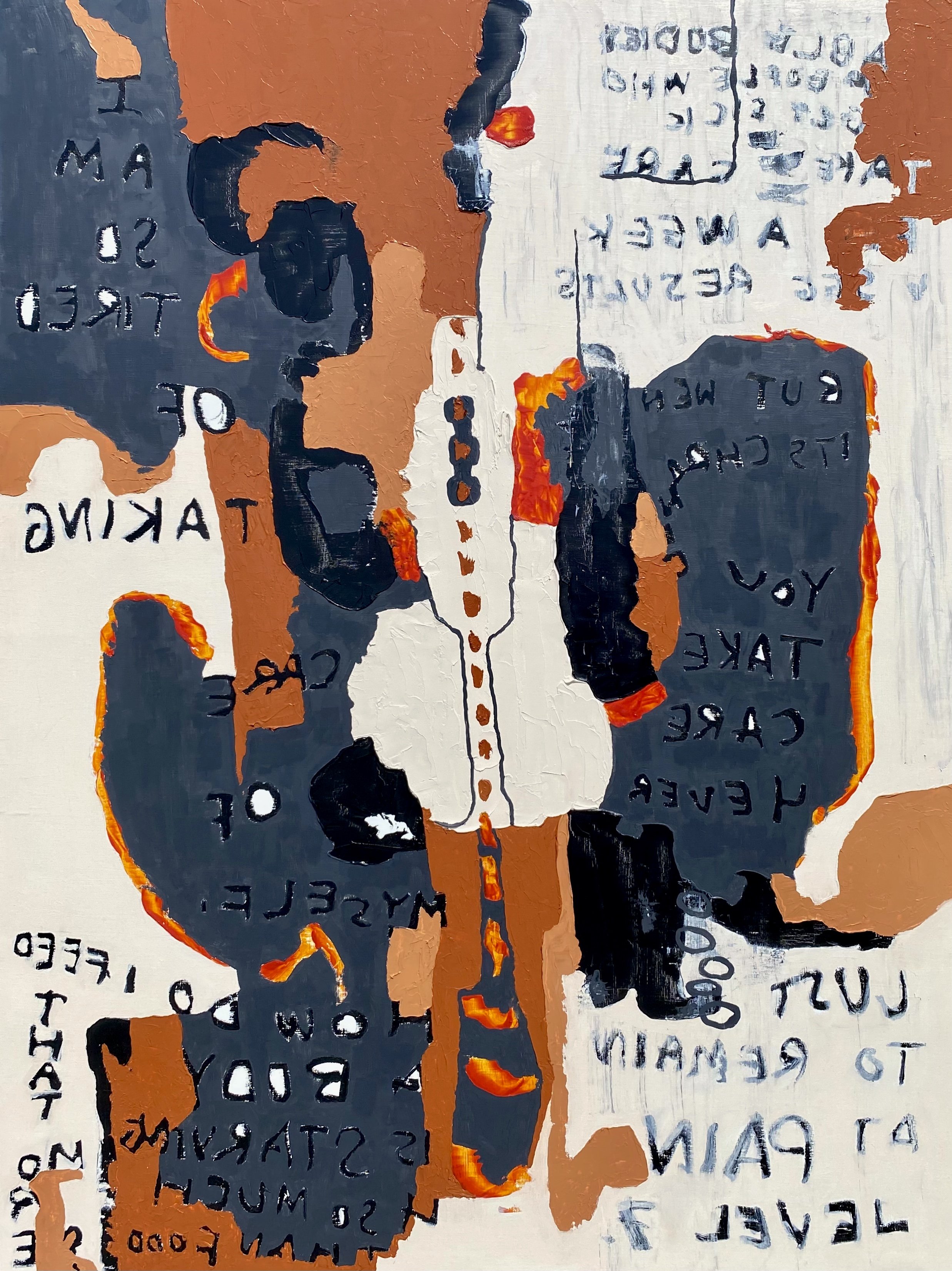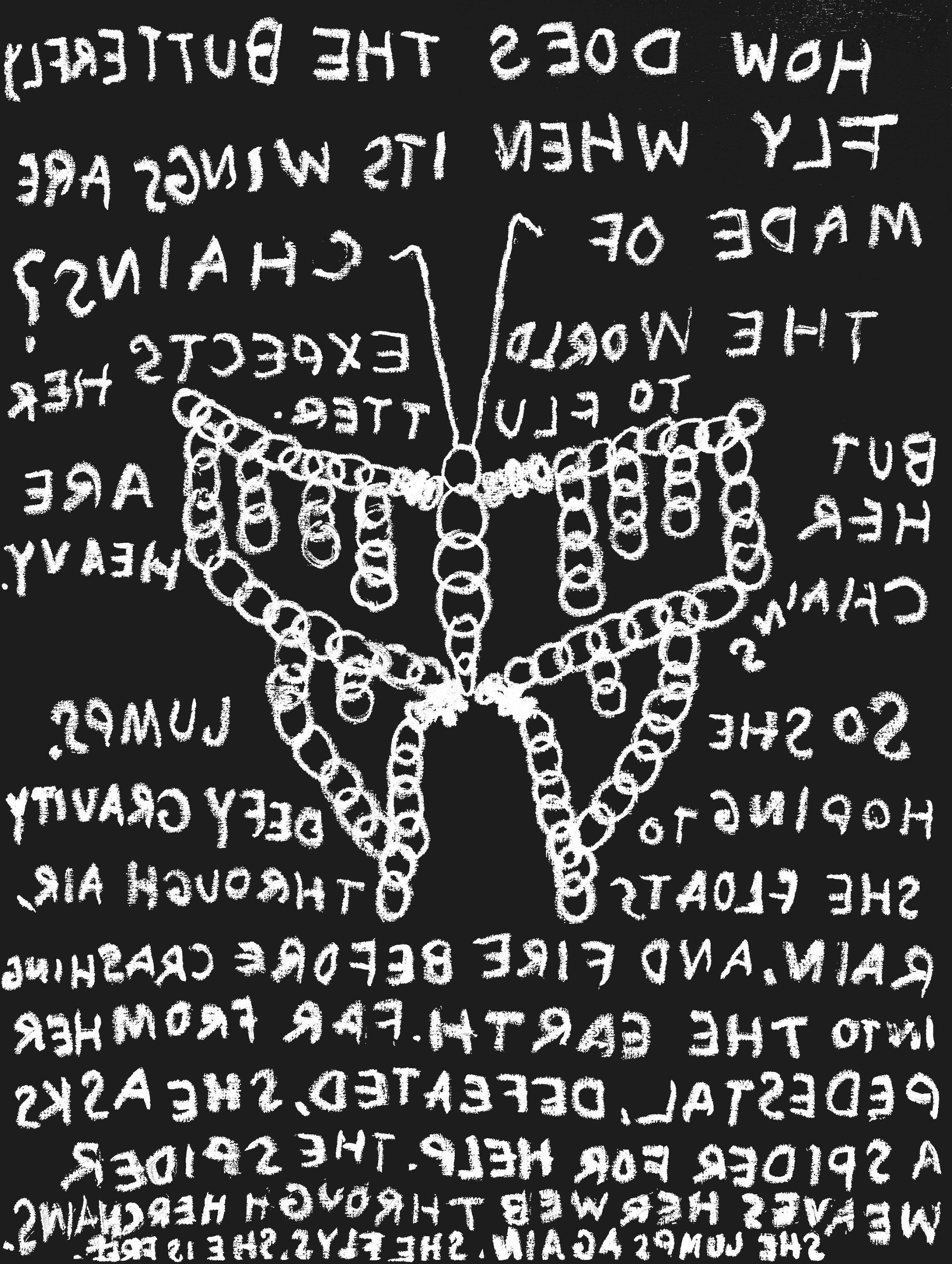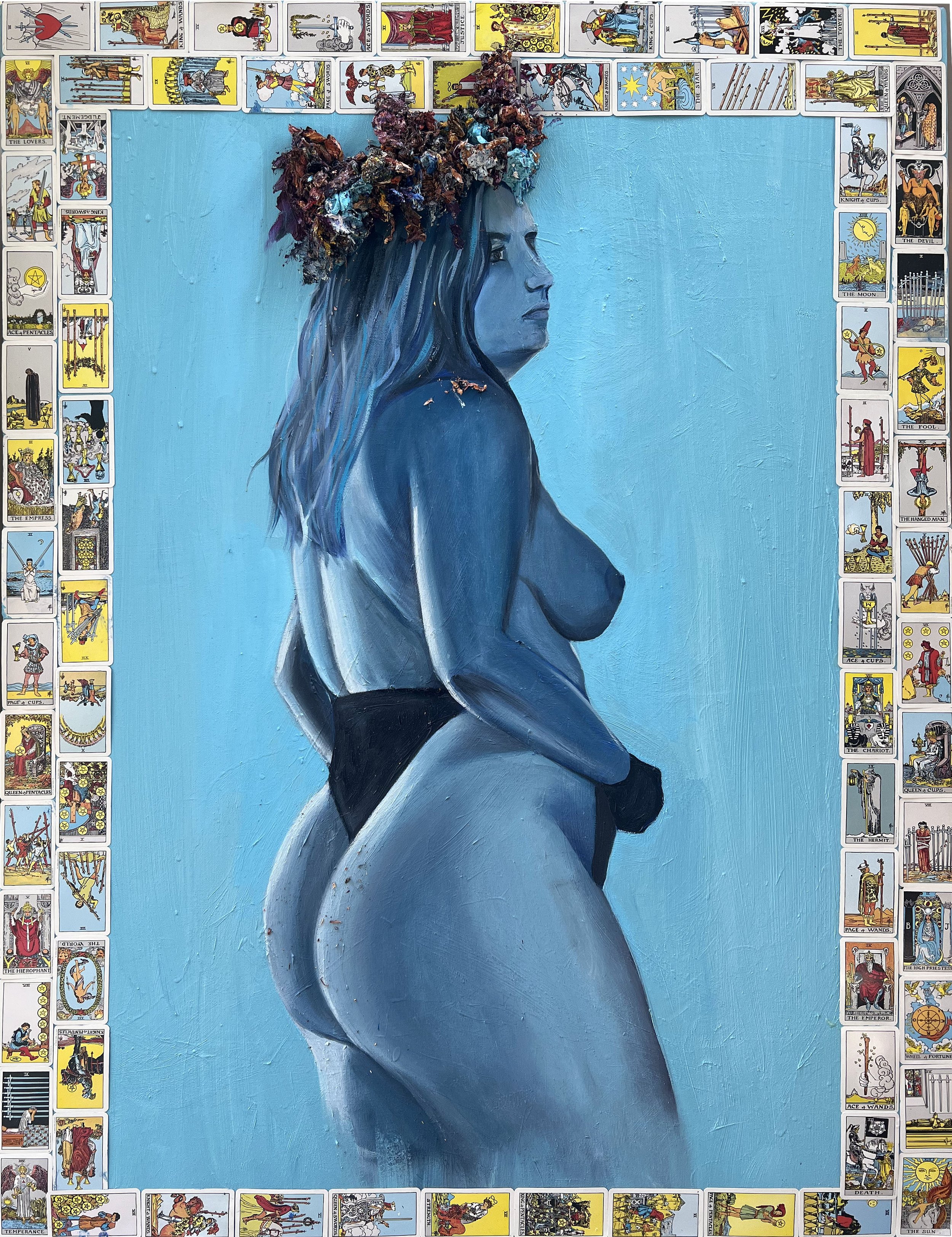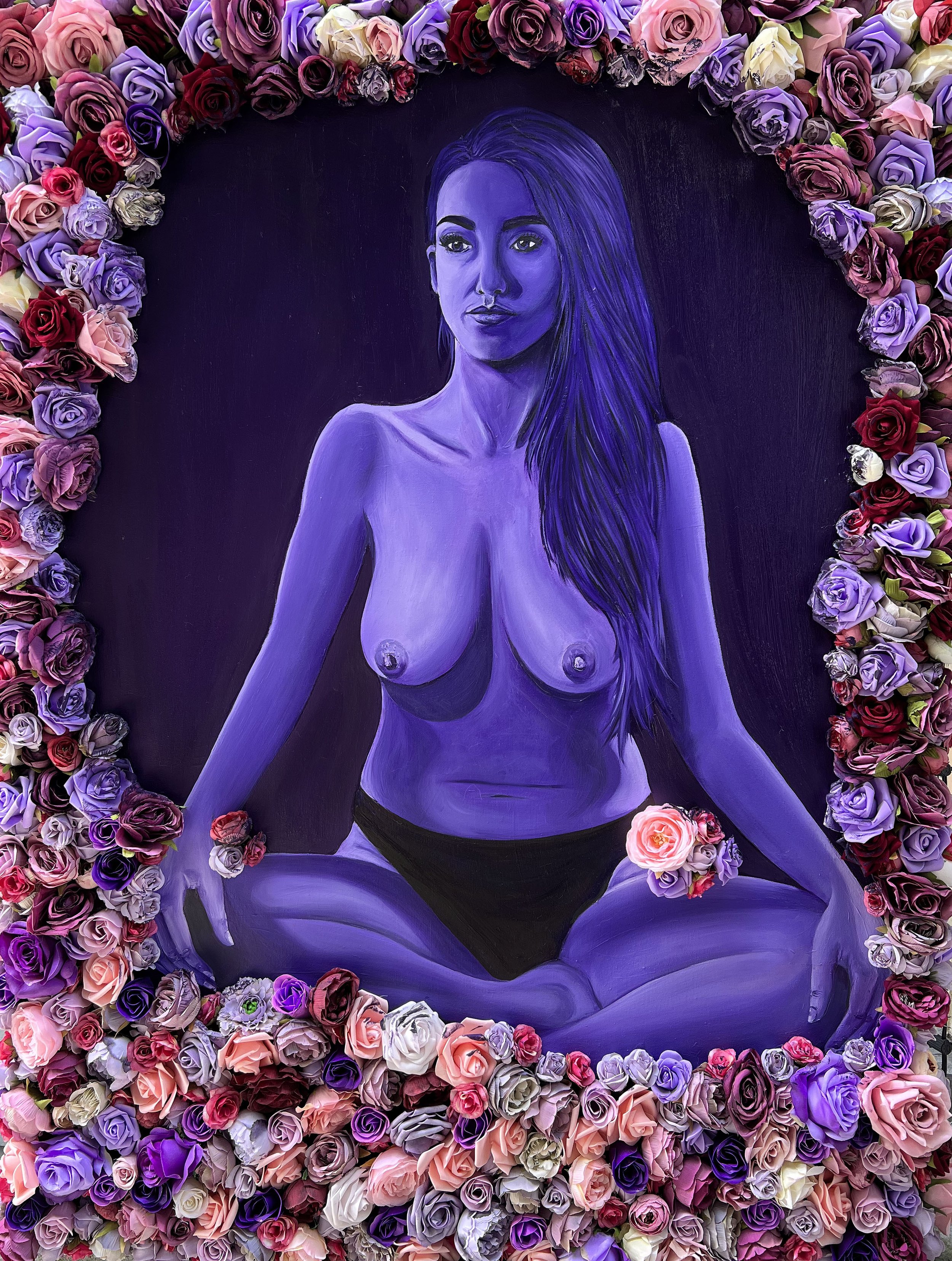August 13 - September 4
Opening reception Second Saturday, August 13, 6-10pm.
Gallery hours are Saturdays and Sundays, 12-5pm.
Be sure to check out The St. Claude Art Rag for more info on the Second Saturday Art Openings on St. Claude!
PROGRAMMING this month:
Sunday, August 28, 4pm: HEAVY METAL; heartburn
Artist Talk with Ann Haley and Chloe Harrison-Ach
Rooms 1 & 2
Blas Isasi, An idea is just the shape of a flower, Installation, Variable dimensions, 2022
An idea is just the shape of a flower
Blas Isasi
The Peruvian coast consists of a long and narrow strip of desert squeezed between the Andes mountains and the Pacific Ocean, and crossed by a series of oasis-like river valleys. Given its long history of human occupation, ancient ruins have been one of this arid landscape´s most emblematic features. Abandoned temples and settlements that were gradually reclaimed by the desert sands were then turned into venerated shrines and cemeteries by subsequent kingdoms and their societies. After the Spanish conquest of Peru, this continued under new forms as those practices became more syncretic (e.g. witchcraft), together with the then nascent and still ongoing looting of tombs and temples. The latest development in this long history is the commodification of the past under a neoliberal regime that renders ancient artifacts and archeological sites as tourist attractions: inert, sterilized and “disenfranchised” relics of the past. Peru´s coastal desert is a scarred landscape, one whose scars work as mnemonic devices and indexical marks. Past and present populations have systematically engaged in a complex, dynamic and often conflictive process of negotiating memory through an editing process that sometimes involves the erasing of these marks, others their unearthing, resignifying and reinvention altogether resulting in a living palimpsest.
Ontologically speaking, Andean cultures structured the world in a complex and fluid relational system with no nature/culture divide acting as an organizing principle. All existing entities, both human and other-than-human, had an active social role and an agency over events proportional to their relative importance within the social structure. Unfortunately, nowadays this landscape is mostly seen as a mere backdrop to human life and liable to all kinds of economic exploitation among other forms of abuse. Having said that, I believe this cultural landscape is still socially active, exerting its agency in various ways through the continuous production of marks and traces that act as communicating signs we simply don´t know how to read. The desert is populated with ruined adobe pyramids and temples eroded by wind, periodical El Niño floods, and human activity of all kinds. For example, it is common to see countless excavated holes in and around these sites left by looters in search of treasures leaving a trail of human remains (i.e. bones), pieces of broken pottery and shredded textiles behind them. In my view, all these ancient and modern landscape features, natural and man-made, destructive and constructive, constitute a system of communication through which nature-culture (Latour) negotiates reality: an ontological political arena of sorts. Unfortunately, most of the necessary knowledge that would allow us to decode this language and be part of the conversation has been lost not so much to time but to Modernity, colonialism and capitalism as the predatory and suicidal civilization project that they are. In the midst of the current global existential crisis, it is imperative to try and rejoin the larger community of things we belong to and from which we severed ourselves after Modernity. The question is how.
Following in the footsteps of numerous past Peruvian artists like Emilio Rodríguez Larraín, Juan Javier Salazar, and most notoriously Jorge Eduardo Eielson in making the desert a subject of their work, in An idea is just the shape of a flower I try to bring into play different key aspects, fragments, materials and symbols characteristic to this unique cultural landscape. By deploying various strategies, I intend to animate some of its most representative elements such as sand, clay, bones, etc. so as to put them in dialogue with each other in ways that seem counterintuitive, suggesting not only new connections and meanings but also other possible worlds. The accompanying presence of seamless metal structures in my installations hint to cartesian reason on the one hand, while evoking 20th century Modernist design on the other, the quintessential aesthetics that symbolizes the unfulfilled promise of progress in the context of the Global South. The resulting tension from the juxtaposition of these seemingly opposing sets of elements is meant to, in the words of Raymond Williams, convey a “structure of feeling”: the feeling of things before we are able think them; the feeling of a different world before we can imagine it. In short, mine is a humble attempt to reenchant the world and sow the seeds of hope in a bleak and perilous age.
Last but not least, this exhibition is meant as a heartfelt and critical homage to the arid and stunningly beautiful land I grew up on.
Blas Isasi (1981) is a Peruvian visual artist living and working in New Orleans. He holds an MFA in Studio Art from Tulane University and a Bachelor degree with a Major in Painting from the Pontificia Universidad Católica del Perú. He is also an alumnus of the post academic program at the Jan van Eyck Academy in the Netherlands. In 2015 he received the Braunschweig PROJECTS Scholarship granted by the HBK (Brunswick University of the Arts) and the state of Lower Saxony consisting of a one-year residency in Brunswick, Germany. In 2021 Isasi was an artist-in-residence at the Joan Mitchell Center in New Orleans. His work has been shown in the USA, Peru, Spain, the Netherlands and Germany. He is currently a member of The Front and the head of the Sculpture Area at Tulane University´s Newcomb Art Department.
rooms 3 & 4

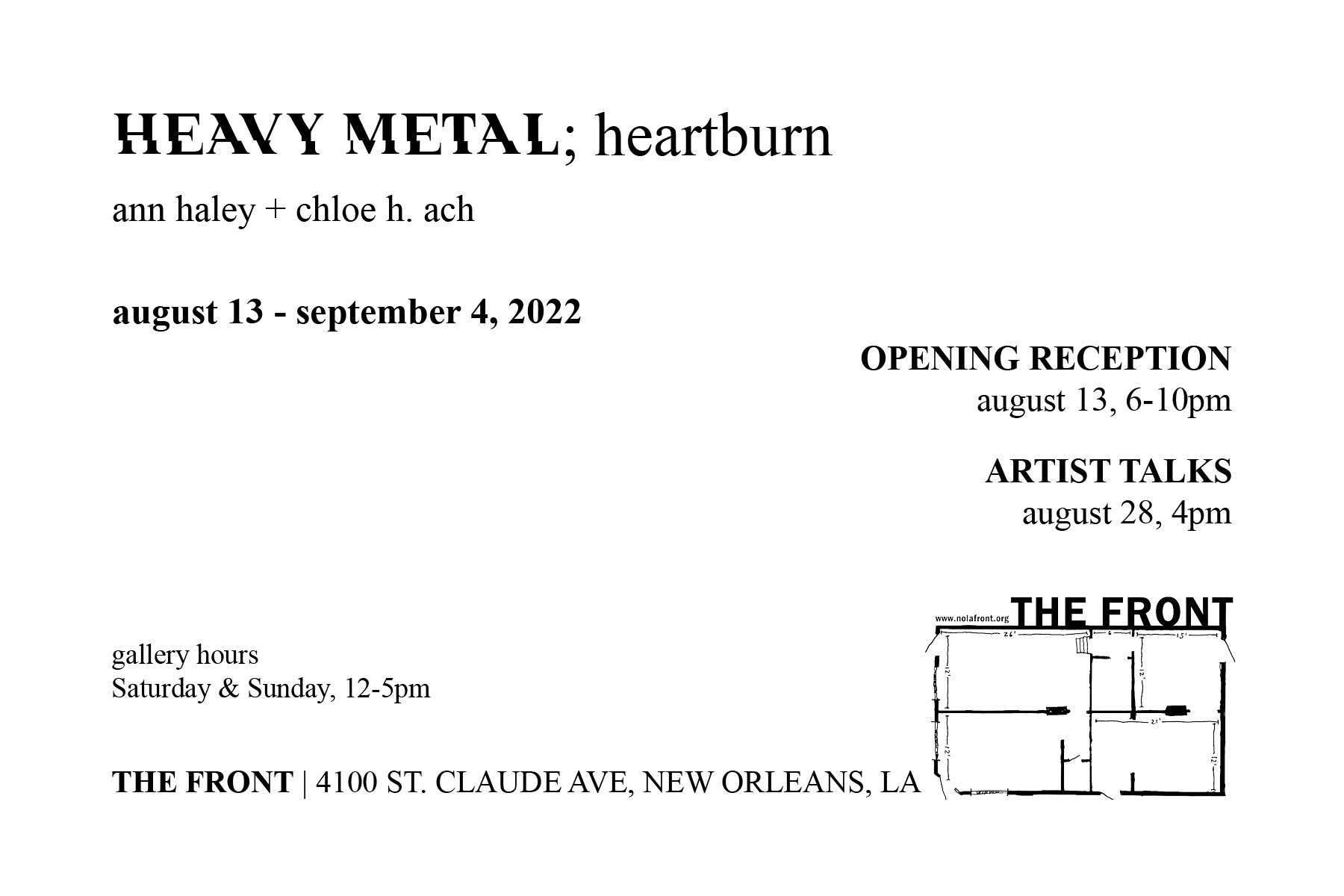
Ann Haley, 7, still (how to feed a body), 36 x 48 inches, oil on panel, 2022.
Ann Haley, heavy metal wings (the story of the butterfly and the spider), 36 x 48 inches, oil on canvas, 2022.
Chloe Harrison-Ach, The Fool, Oil on Canvas, 30 x 40 inches, 2022.
Chloe Harrison-Ach, Temperance, Oil on Canvas, 36 x 48 inches, 2022.
HEAVY METAL ; heartburn
Ann Haley + Chloe Harrison-Ach
HEAVY METAL is a series of 7 paintings that mirror what is left after peeling back the layers of healing physical and emotional trauma. Like an onion, the closer to the core one gets, the more raw and pungent pain feels. With that comes uncontrollable tears and unavoidable discomfort. I spent 7 years trying to manipulate my healing by pulling off the first few layers of a whole batch of onions but pausing when tears welled up.
It was 7:57 AM on April 24, 2015; I saw a flash of the heavy metal bumper of an 18-wheeler headed straight at my driver’s side window. It looked like death, enormous, terrifying, yet somehow still glistening in the morning sun. Sometimes I feel like I died that day, or the me who survived isn’t the me who got T-boned on the way to work. I chose to swerve. Whip lashed. It was loud. I felt the weight, I still feel that weight. That weight feels even more ominous when I consider what would’ve happened had I not swerved, even more so when I wished I hadn’t. I chose life that day, unaware that it wouldn’t be easy.
In Parable of the Sower, Octavia Butler says, “All that you touch, you change. All that you change, changes you. The only lasting truth is change. God is Change.” If the only truth is change, to survive, one has to adapt with change. On April 24, 2022, a heaviness came over me when I acknowledged that I had spent 7 years adapting with change. And adapting to what hasn’t changed because of that day.
Having a metal plate in my cervical spine makes me feel heavy. Not heavy in the sense of weight, but heavy in the sense of not feeling light and free. Heavy in the sense that this metal plate holds my neck upright. Heavy in the sense that this metal plate reflects being unable to heal myself fully on my own. Heavy in the sense that even though it supports my head, I am still in pain. Heavy in the sense that it took having my throat slit open to utter the words “I’m gay.” Heavy in the sense that I had no control over the accident. Heavy in the sense that I am forever adapting to this change. Heavy in the sense that this is a lot to carry.
My body gives, I take. My wise mind knows I owe her, but my wrong mind wants to punish her for it not being easy. 7 years of taking extra care of myself. 7 years of pain, at a level 7 out of 10, 10beingtheworstpainyoueverfelt. I am exhausted. I am angry. I am grappling with the chilling truth that this is my life. I have spent the most recent of those years trying to figure out how to feed a body that is starving for so much more than food, face to face with a choice again. Unaware again, that it will not be easy. In these works, I am (finally) peeling to the core; to the poignant moments that changed my life, chopping them up, allowing myself to become consumed by their harsh aroma before throwing them into a hot pot of oil.
Ann Haley
—
heartburn utilizes nudity to showcase the vulnerability that myself and my subjects often don’t share with the world. Opening up about deeply personal emotional trauma and approaching emotional healing is a complicated experience that we often don't have the necessary tools to navigate.This body of work is a means to capture myself in a delicate light, exposing my insecurities and embracing the parts of myself I’m often afraid to share in fear of rejection.
Working with nude models is a raw experience where the model exposes intimate pieces of themselves. This series started with the self-portrait titled The Fool, a piece that is empowering for myself and my body. Using old paint collected from my palate to create a flower-like crown, surrounded by tarot cards placed strategically, my gaze falls upon the ones most ripe with personal meaning. Each painting boasts a color and textural element that resonates with my subjects and their essence: they’re gay, femme, or both. As a queer woman who has only embraced coming out in the past few years, I feel connected to models who share a common ground in that self-exploration. This collaborative installation shows the repressed darker side of myself. It is the depression that I live with, depicted on the walls, on paper, on canvas and put into physical form.
Chloe Harrison-Ach
__
HEAVY METAL; heartburn explores the common ground in collective pain, queerness, physical and emotional trauma, and the self-doubt we share, yet experience alone.
Ann Haley (Atlanta, GA, b. 1991) is a multimedia artist, curator, and educator living in New Orleans, LA. She received a BFA in Painting from the Savannah College of Art and Design in Savannah, GA in 2014. Her work has been exhibited internationally in solo and group exhibitions in Lacoste, France, Savannah, GA, Gainesville, GA and New Orleans, LA. Haley has worked in Art Education across New Orleans since 2014, most recently at Waldo Burton Boys Home and Youth Empowerment Project. In the last year she has exhibited work at the Contemporary Arts Center, Carroll Gallery, Antenna Gallery, and SHED Gallery in New Orleans, and has been a collective member of The Front Gallery since 2020.
Chloe Harrison-Ach (Long Island, NY, b. 1993) is a New Orleans based artist focusing on portraiture and nude figuration. She spent many years practicing in Brooklyn, NY and studied fine art at SUNY, FIT. Growing up in a family of artists, she was exposed to a vast array of historic art and design. As an adolescent she began oil painting under James Daga Albinson, practicing the art of looking, creating still life arrangements and working from live models. Her current work utilizes the technical tools she learned in her youth and at SUNY, FIT, to evoke emotions, encourage comfort, discomfort, and push the boundaries on how we view ourselves in our most vulnerable state.
annhaleystudio.com
@annhaleystudio
chloeharrisonach.com
@chloeskeletonstudio
